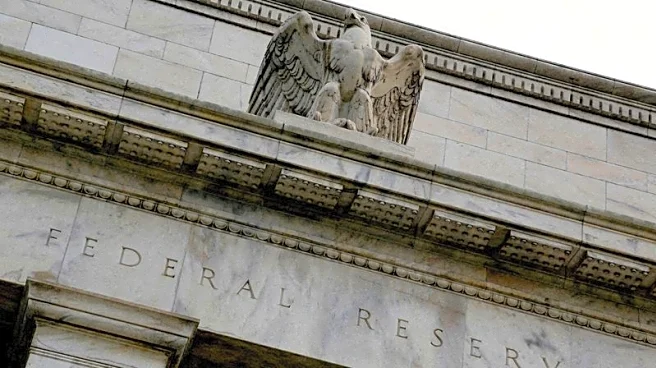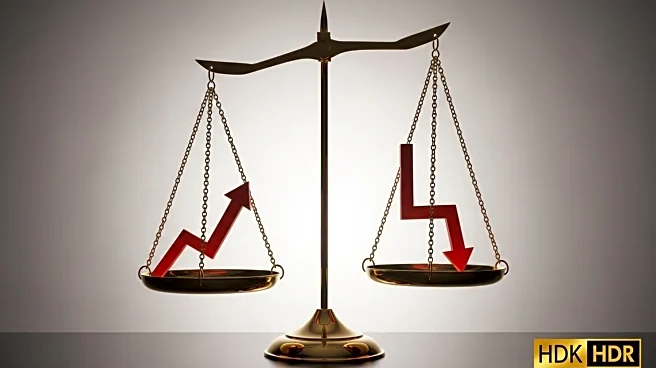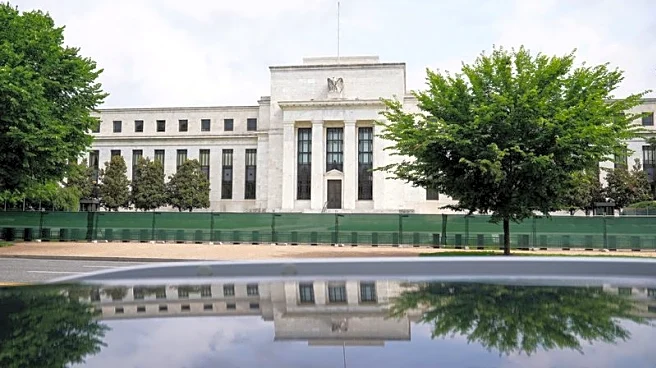What's Happening?
The Federal Reserve is convening for a significant two-day policy meeting, where it is anticipated to announce its first interest rate cut since December. This decision comes in response to a slowing labor market and the potential temporary impact of President Trump's tariffs on inflation. The meeting is marked by the recent confirmation of Stephen Miran, a Trump appointee, to the Fed's Board of Governors, allowing him to participate in the decision-making process. Additionally, Fed Governor Lisa Cook, who faced an attempted firing by President Trump, will also vote. The Fed's decision is influenced by weak job growth and rising unemployment claims, signaling a precarious labor market. Fed Chair Jerome Powell and other officials have expressed concerns about these economic indicators, prompting the expected rate cut.
Why It's Important?
The anticipated interest rate cut by the Federal Reserve is significant as it aims to address the weakening U.S. labor market and mitigate the economic impact of tariffs. Lowering borrowing costs could stimulate economic activity by making loans more affordable for businesses and consumers. However, the move also highlights the ongoing tension between the Trump administration and the Fed, as President Trump has been vocal about his desire for lower rates. The decision could have broad implications for the U.S. economy, affecting everything from mortgage rates to consumer spending. Stakeholders such as businesses, investors, and policymakers will be closely monitoring the Fed's actions and their potential effects on economic stability.
What's Next?
Following the expected rate cut, the Federal Reserve will likely continue to assess economic conditions and adjust its monetary policy accordingly. The Fed's future actions will depend on the labor market's performance and inflation trends, particularly in relation to the ongoing impact of tariffs. The Trump administration's influence on the Fed's decisions may also persist, potentially affecting the central bank's independence. Market participants will be watching for any further rate adjustments and their implications for economic growth and financial markets.
Beyond the Headlines
The developments at the Federal Reserve highlight broader issues of central bank independence and the influence of political pressures on monetary policy. The Trump administration's attempts to reshape the Fed's leadership and its public criticism of the institution raise questions about the balance between political objectives and economic stability. The situation underscores the importance of maintaining a central bank that can operate independently to effectively manage economic challenges.











